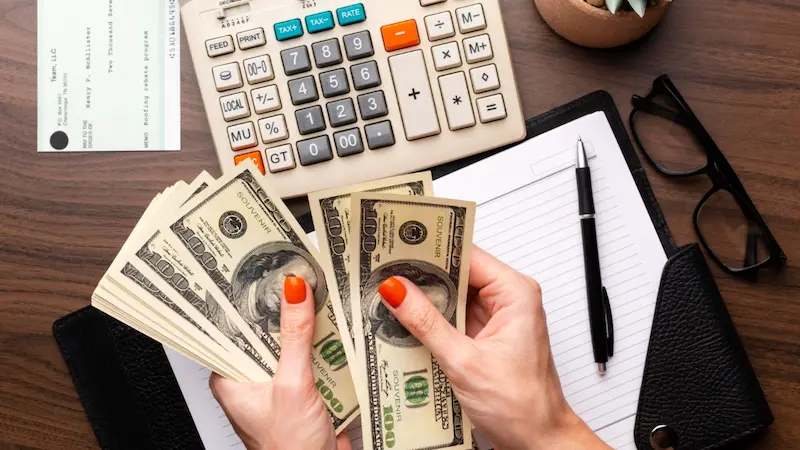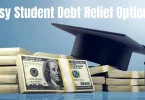If you’re struggling with student loans, you’re not alone. Educational debt can feel like a heavy weight on your shoulders, especially when you’re trying to manage everyday expenses or save for the future. The good news is that with the right strategies, you can take control and pay off your loans faster than you might expect.
In this article, we’ll walk you through tips to reduce educational debt fast that are practical, actionable, and easy to follow—even if your budget is tight.
1. Make a Realistic Budget

Before you can start reducing your debt, you need to understand exactly how much money is coming in and going out each month.
- Track all expenses: Write down everything—rent, groceries, subscriptions, transportation, dining out, and small daily expenses like coffee or snacks.
- Identify unnecessary spending: Look for habits or subscriptions you can reduce or eliminate. For example, cancel unused streaming services or limit takeout.
- Allocate funds to loans: Once you know what’s left after essentials, designate a fixed amount toward your student loans.
Tip: Tools like Mint, YNAB (You Need A Budget), or even a simple spreadsheet can help you visualize your finances. Seeing your progress over time can be very motivating.
2. Pay More Than the Minimum
Making only the minimum payment may feel manageable, but it keeps you in debt longer because interest keeps piling up. Paying even a little extra each month can make a huge difference.
- Start small: If your budget is tight, add an extra $25–$50 per month. You’ll be surprised at how much this reduces your loan balance over time.
- Use the avalanche method: Pay extra on loans with the highest interest rates first. This strategy reduces the total interest you pay and helps you become debt-free faster.
- Snowball method option: If motivation is more important, pay off smaller loans first to build momentum and confidence.
3. Consider Refinancing or Consolidation
Refinancing and consolidating can simplify your payments and, in some cases, save you money.
- Refinancing: Combines your loans into a new loan with a potentially lower interest rate. This reduces the total interest you pay over time.
- Consolidation: Combines multiple federal loans into a single payment. While it doesn’t lower your interest rate, it can make your payments easier to manage.
Caution: Refinancing federal loans with a private lender may cause you to lose benefits like deferment, forbearance, or eligibility for forgiveness programs. Carefully weigh the pros and cons before making a decision.
4. Use Windfalls Wisely
Unexpected money can help you make a big dent in your loans:
- Tax refunds
- Year-end work bonuses
- Cash gifts from friends or family
Instead of spending these windfalls, apply them directly to your loan balance. This can significantly reduce the principal, saving you both time and interest.
Pro Tip: Even small windfalls of $100–$500 applied strategically can shorten your repayment timeline by months or years.
5. Pick Up Extra Income Streams
Boosting your income is one of the fastest ways to reduce educational debt.
- Side gigs: Freelancing, tutoring, or rideshare driving can add hundreds of dollars each month.
- Part-time work: Even a few hours a week at a local store or online platform can make a difference.
- Monetize hobbies: Sell crafts, digital designs, or offer online services.
Friendly Advice: Choose something manageable so it doesn’t burn you out. Consistency matters more than intensity.
6. Take Advantage of Loan Forgiveness Programs
Depending on your career, you might be eligible for loan forgiveness:
- Public service or government jobs: Certain federal programs forgive student loans after 10–20 years of qualifying payments.
- Teaching or healthcare professions: Special forgiveness programs exist for teachers, nurses, and doctors serving in underserved areas.
- Military service: Some branches offer student loan repayment assistance.
Tip: Research your eligibility carefully and ensure you meet all requirements. Loan forgiveness can reduce your debt legally without extra payments.
7. Cut Unnecessary Expenses

Every dollar saved on nonessential spending is a dollar you can put toward your loans.
- Cancel unused subscriptions (streaming, magazines, apps)
- Cook meals at home instead of eating out
- Shop smarter—buy in bulk, use coupons, or wait for sales
- Limit luxury purchases until your debt is under control
Quick Hack: Automate extra payments to your loan account so you don’t have to think about it every month. Automation ensures consistency, which is critical for reducing debt fast.
8. Stay Motivated and Track Progress
Paying off student loans can feel like a long journey, but tracking your progress keeps you motivated.
- Celebrate milestones: Paying off a single loan, reaching 25% or 50% of your total debt paid—acknowledge your achievements!
- Visual tools: Use charts, apps, or sticky notes to visualize your decreasing balance.
- Set realistic goals: Short-term goals make your long-term plan more achievable.
Consistency is key. Even small, steady payments accumulate over time and eventually lead to financial freedom.
9. Automate Your Payments
Automation is a simple yet powerful tool for staying on track with debt repayment.
- Set up automatic monthly payments: This ensures you never miss a due date and avoids late fees.
- Pay extra automatically: Some lenders allow you to set a fixed extra amount each month. Automating this helps you chip away at the principal consistently without extra effort.
Pro Tip: Even small automated extra payments can significantly shorten your repayment period over time, thanks to compounded interest savings.
10. Negotiate Your Interest Rates
It may sound surprising, but some lenders are open to negotiating interest rates, especially if you have a strong payment history or good credit score.
- Call your lender: Ask if they offer any lower-rate programs or hardship options that reduce interest.
- Check for federal options: Federal student loans sometimes allow interest rate reductions for automatic payments.
Lowering your interest rate can save hundreds or even thousands of dollars over the life of your loan.
11. Reevaluate Your Loan Repayment Plan
Federal student loans offer multiple repayment plans designed to fit different financial situations.
- Income-Driven Repayment Plans: These adjust your monthly payment based on your income and family size. If your current payments are unmanageable, switching to one of these plans can prevent delinquency.
- Graduated Repayment Plans: Payments start lower and gradually increase. This can be useful if you expect your income to rise steadily.
Tip: Even if you don’t choose a lower-payment plan, reviewing your options regularly ensures you’re on the most efficient repayment path.
You may also like to read this:
Manage Multiple Student Loans Easily: Complete Guide
Student Loan Payment Tracking Methods Made Easy
Easy Student Debt Relief Options: Reduce Your Loans Fast
Best Debt Relief Programs For Students – 2025 Guide
How To Get Student Loan Forgiveness Quickly And Easily
12. Avoid Accumulating More Debt
While paying off your educational debt, it’s critical to prevent new loans or credit card balances from piling up.
- Use credit wisely: Only borrow what’s necessary and pay off balances monthly.
- Focus on essentials: Avoid luxury or impulse spending until your loans are under control.
- Emergency fund: Build a small emergency savings account ($500–$1,000) to avoid relying on new debt when unexpected expenses arise.
13. Seek Professional Guidance
If your debt feels unmanageable, a financial advisor or student loan counselor can help.
- They can help you create a repayment plan tailored to your income.
- Offer insights on loan consolidation, refinancing, or forgiveness programs.
- Provide motivation and accountability to stay on track.
Friendly Advice: Look for certified financial planners or nonprofit credit counselors to avoid scams.
Final Thoughts
Reducing educational debt is a journey that requires planning, discipline, and a proactive approach. By following these tips to reduce educational debt fast, you can take control of your finances and move toward a debt-free life faster than you may have thought possible.
Remember, every extra payment, budget adjustment, and income boost you make is a step closer to financial freedom. Start today, stay consistent, and watch your student loans shrink—giving you peace of mind and a brighter financial future.
FAQs About Reducing Educational Debt Fast
1. What is the fastest way to pay off student loans?
The fastest way is to make extra payments toward your loans while prioritizing high-interest debt. Using strategies like the avalanche method and allocating windfalls or extra income to your loans can significantly speed up repayment.
2. Should I refinance or consolidate my student loans?
Refinancing or consolidation can help simplify payments and may lower interest rates. However, refinancing federal loans with a private lender may cause you to lose federal protections and forgiveness eligibility, so weigh your options carefully.
3. How much extra should I pay on my student loans each month?
Even an extra $25–$50 monthly can make a difference over time. The more you can consistently pay above the minimum, the faster you’ll reduce your debt and save on interest.
4. Can I use tax refunds or bonuses to pay off my loans?
Absolutely! Applying windfalls like tax refunds, work bonuses, or gifts directly to your student loans reduces your principal and can shorten your repayment period.
5. Are there income-driven repayment plans that can help?
Yes, federal loans offer income-driven repayment plans that adjust monthly payments based on your income and family size. These plans can make payments more manageable while you work on paying off debt faster.





